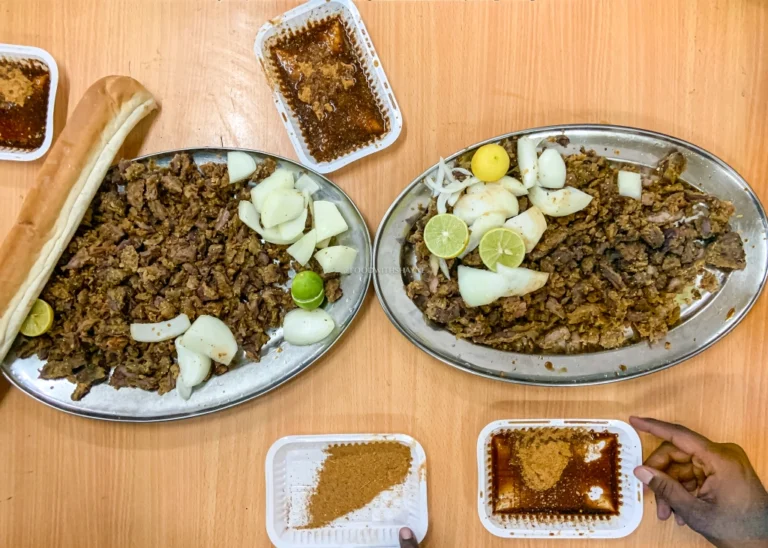Introduction to Sudanese Cuisine
Sudanese cuisine is a reflection of the country’s diverse cultural heritage and geographical location in Northeast Africa. The cuisine is heavily influenced by neighboring countries such as Egypt, Ethiopia, and Chad, as well as the Arab world. Sudanese cuisine is known for its flavorful dishes that are prepared using simple and fresh ingredients. The cuisine is characterized by the use of spices and herbs such as cumin, turmeric, garlic, ginger, and coriander.
Common Ingredients in Sudanese Cooking
Sudanese cuisine is mainly based on grains, including millet, sorghum, and wheat, which are used to make bread and porridge. Vegetables such as eggplant, okra, and tomatoes, as well as legumes such as lentils and chickpeas, are also commonly used in Sudanese cooking. Meat, especially lamb, is an important part of the cuisine, and is often used to prepare stews and grilled dishes. Spices and herbs, such as cumin, turmeric, garlic, ginger, and coriander, are used to flavor dishes.
Religious and Cultural Dietary Restrictions
Islam is the predominant religion in Sudan, and it has a significant influence on the country’s cuisine. Muslims are prohibited from consuming pork and alcohol, and as a result, Sudanese cuisine is mostly halal. Many Sudanese dishes are also prepared with a variety of spices and herbs that are believed to have medicinal properties. On the other hand, some Sudanese tribes have cultural dietary restrictions, such as the Bari people who don’t eat fish.
Traditional Sudanese Dishes and their Nutritional Value
Some popular traditional Sudanese dishes include Ful Medames, a stew made from fava beans, onions, tomatoes, and spices, and Kisra, a type of bread made from sorghum flour. Another popular dish is Bamia, which is a stew made from okra, lamb, and tomatoes. Some Sudanese dishes, such as Ful Medames and Bamia, are rich in protein and fiber and are considered nutritious.
Health Benefits and Risks of Sudanese Cuisine
Sudanese cuisine is generally considered healthy because it is based on whole grains, vegetables, and lean meats. However, some dishes can be high in fat and calories, especially those that are prepared with oils and ghee. Additionally, some Sudanese dishes may contain high levels of sodium, which can be problematic for people with high blood pressure.
Conclusion: Balancing Taste and Nutrition in Sudanese Cooking
Sudanese cuisine is a delicious and nutritious cuisine that is based on whole grains, vegetables, and lean meats. While there are cultural and religious dietary restrictions, Sudanese cuisine offers a variety of dishes that are suitable for everyone. To balance taste and nutrition, it is important to use fresh ingredients, limit the use of oils and fats, and season with herbs and spices instead of salt. With proper planning and preparation, Sudanese cuisine can be enjoyed as part of a healthy and balanced diet.

